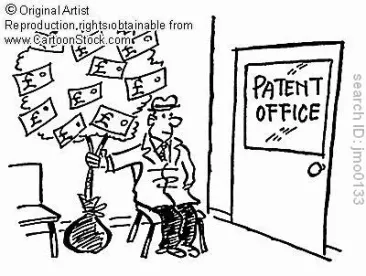Strong opinions abound as to whether definitions should be included in a patent application. The client, or the firm, may have a policy about definitions. This is likely worth following, but might be worth revisiting in certain circumstances. Here are some pros and cons, for your consideration.
Many clients prefer to omit explicit definitions in patent applications for terms, in order to allow “wiggle room” during possible litigation. The applicable principle here is that putting a specific definition for a term in the patent application might be too limiting when it comes to claim interpretations in a court.
Some clients prefer to include explicit definitions for terms, in a glossary at the beginning or end of the specification in a patent application, or on an as needed basis as the term is introduced along the way. The applicable principle here is that putting in specific definitions for terms provides solid ground when it comes to claim interpretations.
One way to define terms, without putting in explicit definitions, is to give examples. Examples often help fill out the claims scope, so that embodiments are not limited to one specific example. Another way to define terms is by context. Use of a term in the context of a description, with examples and embodiments, can show what is meant by the term without committing to a specific definition. A caution here is that a single sentence using a term, particularly if the term is in the claims, might not be sufficient context to determine the full meaning of the term.
A patent applicant can be his or her own lexicographer. However, unusual uses of words and combinations of words deserve meaningful explanation in the patent application. Without such, examiners and courts are free to interpret words in a manner that is contrary to the applicant’s intent. It behooves the patent practitioner to make sure that the meanings of words, especially in the claims, are clear. Context, examples, embodiments, and definitions can play important roles.
Where there is concern that a definition, an example, or an embodiment might be too limiting for a term, especially if the term is applied in the claims, boilerplate language can be added to the specification, to the effect that other embodiments etc. may be applicable. Intuitively, this is important near the point(s) of novelty. But we have also seen this is important elsewhere in claim language, even in seemingly ordinary claim limitations involving terms commonly known in the various arts.
For instance, sometimes an examiner takes a claim term with a common meaning, or a claim term with a well-known meaning in an art, e.g., a term of art, and interprets the term so that it applies to some reference in a manner wholly different from the intentions of the patent applicant. This is where the use of the term in the specification is vital. For, an examiner may believe and assert that he or she is interpreting the term in the broadest reasonable manner, but the applicable requirement is that claim terms are interpreted in the broadest reasonable manner consistent with the specification. We can rein in an improperly overbroad interpretation of a claim term, made by an examiner during patent prosecution and applied to a reference of which we wish to dispose, by arguing that such interpretation is inconsistent with the specification. But, we can only do so if the specification has useful support for the meaning of the term. So, choose carefully whether or not to use explicit definitions, and keep in mind other ways in which the meaning of terms can be found.




 />i
/>i

